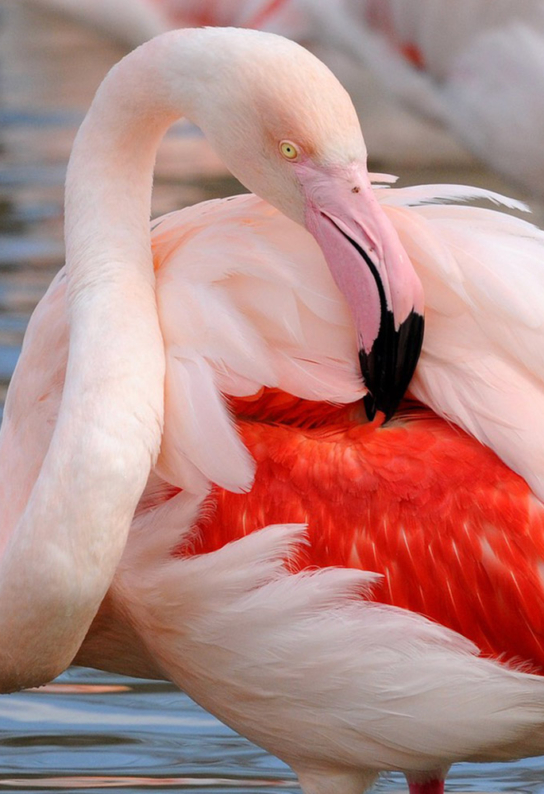The Camargue: a gem to protect
The grand island of the Camargue is situated between the two branches of the River Rhône. It is the result of several centuries of human intervention and country planning to canalize freshwater and saltwater. By modifying its natural course, men have weakened the ecosystem of the largest European wetland. The development of tourism, coastal erosion and global warming are also important issues for this fragile territory.
Inhabitants, economic stakeholders and public institutions have quickly realized that it is essential to preserve this unique territory. In 1927, its ecological importance was recognized by the French State by listing it among the National Nature Reserves.
Key dates:
- 1927: Creation of the Réserve naturelle nationale de Camargue du Vaccarès, first reserve in France
- 1970: Creation of the Camargue Regional Natural Park
- 1977: Classification of the Camargue as a Biosphere Reserve by UNESCO
- 1986: Classification as a Ramsar site : wetlands of international importance
- 2011: Creation of the natural area of the Marais du Vigueirat
- 2013: Creation of the Réserve marine de Beauduc
- 2014: Classification as a Natura 2000 site
National or Regional Nature Reserve – what’s the difference?
Their names sound similar, but their purpose is very different.
- A nature reserve has a regulatory power allowing it to prohibit any destruction and modification of the environment. Its primary goal is to protect an area as well as the species, fauna and flora that occupy it. As a result, certain activities may be prohibited and human activity is very limited.
- A regional natural park is an open territory. Its management institution has no regulatory authority. Only current regulations apply. Individuals can live in these areas and carry out economic activities. The role of the Park is to ensure the maintenance of natural and cultural heritage, but also to support economic stakeholders and enhance sustainable management throughout the territory.
Camargue Regional Natural Park
The Camargue is a wetland of international importance benefitting from its grand reputation and several protection systems. But it is also an inhabited rural area with major economic activities. The Regional Natural Park operates on the whole area of the Grande Camargue, leading pluriannual projects in consultation with locals and visitors.
Its main mission is to find a balance between sustainable human activities and nature protection:
- Protection and management of the natural, cultural and landscape heritage
- Economic, social and cultural development and planning
- Welcoming, raising awareness and educating the public
- Experimentation of new management methods
The Park also coordinates actions taken by different public and private stakeholders, partners and associations.
Contrat de Delta, charte du Parc naturel régional de Camargue
Every year, the Camargue Regional Natural Park offers activities and animations for schools, students and visitors. A program rich in discoveries.
The administrative center of the Park is situated at the Mas du Pont de Rousty, in the rural part of Arles.
Nearby, the Museum of the Camargue takes you on a trip through history. An educational, playful and interactive experience. Check out this Video. Just a few minutes from the embouchure of the Grand Rhône, visit the Domaine de la Palissade, the only site that has not been confined in the Camargue. Enjoy an intimate encounter with nature and wild fauna and flora!
ID of the Camargue Natural Regional Park
-
- Creation date: September 25th, 1970
- 3 Communes: Arles (rural area), Port Saint-Louis du Rhône and Les Saintes-Marie-de-la-Mer
- Area: 101,000 hectares on land, 34,000 hectares on sea
- 75 km of seafront
- 10,848 inhabitants
- Highest point: 4 m above sea-level
- 5,700 plant and animal species, 489 of them protected
- 150,000 migratory birds per year
In favor of the Camargue: partners, passionate people and projects
One mission of the Regional Natural Park is to federate different stakeholders who take part in the management and the preservation of the Rhône delta. It can count on the support of different institutional partners on a local, regional and national level: the Provence-Alpes-Côte-D’azur Regional Council, the department of the Bouches-du-Rhône, the Ministry of Environment, regional State offices in charge of the environment, the Federation of all French Regional Natural Parks, the towns of Arles, Les Saintes-Marie-de-la-Mer, Port Saint-Louis du Rhône, the district Arles-Crau-Camargue-Montagnette, the Water Agency Rhône-Méditerranée and Corsica and the Conservatoire du littoral.
The Conservatoire du littoral is a very important stakeholder. It is the owner of more than 20,000 hectares of land which is managed by its partners: the Regional Natural Park and the Société de protection de la Nature. There are also other stakeholders who intervene in land control in order to protect natural areas. The department of the Bouches-du-Rhône is one of them. There is also the foundation of La Tour du Valat, founded by the ornithologist Luc Hoffmann in the 1950s. He bought more than 2,000 hectares of land for research projects. At the same time, another bird enthusiast, André Lamouroux, decided to showcase the birds that occupy his land in Pont-de-Gau. His son took over in 1974. Today, the Pont de Gau bird park allows you to discover wildlife in its natural environment on 7 kilometers of discovery trails across an area of 60 hectares.

Professionals committed to the Beauduc Marine Reserve
The Regional Natural Park manages all of the protected marine areas of the Camargue, including the Beauduc Marine Reserve and the Camargue Biosphere Reserve.


